VERONA, WI – Cleary Building Corp. is proud to congratulate long-time employee Jean Main on…

Utilizing Digital Badges in Corporate Training: A White Paper
Utilizing Digital Badges in Corporate Training: A White Paper
2015-2016
Download and view the original whitepaper here.
Cleary Building Corp. and Madison College
School of Professional and Continuing Education
Gwendolyn Jones
Madison College
School of Professional and Continuing Education
May 24, 2016
EXECUTIVE SUMMARY
A unique characteristic of Digital Badges is the continuous connection to the granting institution that can validate not only their issuance, but the curriculum required for learning at the time of issuance. The Madison College School of Professional and Continuing Education, an early adopter of digital badges as a means to recognize the adult students’ work-readiness has expanded its reach beyond the campus and into the greater Madison Community.
In July, 2015 the administration of Madison College School of Professional and Continuing Education approached Cleary Building Corp., a Verona, Wisconsin-based, family-owned manufacturing and construction company, to request that the company participate in the first “field test” of badging on-site, employee training. As a result, a public-private partnership was established with Cleary Building Corp. Steel Wood University. Steel Wood University is Cleary Building Corps.’s in-house series of training courses offered exclusively to company employees.
ENHANCING TRAINING METRICS
Like many companies, Cleary Building Corp. invests significant resources to deliver employee training programs tailored to their specific industry and organizational needs; however, the company has yet to fully develop a tool to broadcast the accomplishments of its employees. Steel Wood University outlines the critical steps required for an employee to pass each course. Madison College reviewed and approved the curriculum for each course to provide the pathway for a digital badge to be issued upon passing the written test.
The Madison College digital badge provides Cleary Building Corp. with a unique and dynamic way to present certificates and record achievements through social media channels. Not only is the digital badge an extremely effective and efficient way for Cleary employees to show pride in what they have learned and earned, it also serves as digital verification of a well-earned accomplishment.
DIGITAL BADGES IN A CORPORATE TRAINING ENVIRONMENT
Digital badges capture and communicate what a learner knows, and more importantly, they demonstrate and give credit for knowledge proficiency. Their value in non-credit professional education and corporate training environments where formal credentials (degrees granted, diplomas) are not granted has yet to be fully realized. In these environments, learners are gaining valuable workforce or industry specific knowledge.
PRELIMINARY FIELD TEST OUTCOMES
Digital badge implementation in employee training provides multiple benefits to all engaged in their use, primary beneficiaries are:
The Learner: Digital badges showcase the academic rigor required to achieve the badge, and badges are verifiable proof that the skills have been mastered. In addition, the learner has the ability to promote their achievement by “sharing” their earned badge(s) across multiple social media platforms.
“I have it on my LinkedIn; it is another way to show what I have achieved. I think it could also be great to demonstrate to potential clients that I have the knowledge to provide them with the best solution every time.”
– Michael H., Cokato, MN
The Employer: Because of the verifiable rigor, and the ability to align the training to specific industry or employer standards, employers are ensured that employees have gained the knowledge and skills necessary to be proficient in their positions. Additionally, as employees share their badges via social media networks, employers benefit from the social media exposure each time a badge is shared.
Immediate benefits to Cleary Building Corp. include:
• The introduction of a dynamic, academically rigorous, and verifiable tool that articulates their desired learning outcomes upon course completion.
• An ever-expanding social media presence resulting from employee badge sharing:
Total badges issued: 155
Number shared on social media: 81
Social media viewings: 222
The Issuer: Non-credit professional development programs and training are validated. As learners socialize their badges, the Madison College brand will expand. Through brand expansion, the Madison College identity and reputation in external learning communities will increase as well.
AN INTRODUCTION TO DIGITAL BADGES
“Badges can help engage students in learning, and broaden the avenues for learners of all ages to acquire and demonstrate – as well as document and display their skills.” Badges can help speed the shift from credentials that simply measure seat time, to ones that more accurately measure competency.” Arne Duncan, Former U.S. Secretary of Education, 2011
WHAT IS A DIGITAL BADGE?
Digital Badges are portable, online validations of learning experiences that employ rigorous curriculum, clear learning outcomes, supported by embedded metadata, displayed in a symbolic image and issued by a trusted source. The badge’s metadata standardizes information, includes secure details about the badge’s criteria, evaluation process, and provides evidence of the learner’s work and ensures that the badge is genuine. Digital badges provide learners the control and flexibility to socialize/share verifiable records of their skills and competencies with individuals via LinkedIn, Facebook, Twitter, and other social media networks, as well as within online portfolios.
Digital badges are a proven way to capture and communicate what a learner knows and more importantly, they demonstrate and give credit for competency. Badges also have the ability to represent different levels of work and learning engagement, including specific skills mastered or achievements. Their value in non-credit professional education and corporate training environments where formal credentials (degrees granted, diplomas) are not granted has yet to be fully realized. In these environments, learners are gaining valuable workforce or industry specific knowledge, and the badge, supported by the verified curriculum metadata, certifies the learning outcomes.
THE DISTINCTIVENESS OF DIGITAL BADGES
A unique characteristic of digital badges is their continuous connection to the granting institution that can validate not only their issuance, but the curriculum required for learning at the time of issuance. This validation allows for the accomplishments required for earning the digital badge to be portable and readily available for display across multiple social media platforms. This flexibility gives the learner more opportunities to promote their accomplishments than those who’ve earned diplomas, degrees or paper certificates.
THE BENEFICIARIES OF DIGITAL BADGE IMPLEMENTATION
Digital badge implementation in employee training provides multiple benefits to all engaged in their use. The primary beneficiaries are:
The Learner: Showcases the academic rigor required for achieving the badge by authenticating: badge criteria and description (what the recipient needed to do or demonstrate to earn the badge), evidence (an authentic representation or connection to the underlying work performed or contribution made to earn the badge), a date (precisely when the badge was awarded), its expiration (when, if ever, the credential bestowed is no longer valid).
The Employer: Affirms specific employee knowledge gained and skill sets; provides a specific reference point for employee continuing education. Business value of training and the return on investment (ROI) can be tracked over time. As employees socialize their badges, employers benefit from the accompanying social media exposure each time the badge is “shared.”
The Issuer: Programs and training are validated. Brand expansion begins to occur. As learners socialize their badges, the issuer’s brand is expanded.
CLEARY BUILDING CORP. – THE FIELD TEST
In July, 2015 the Madison College School of Professional and Continuing Education administration approached Cleary Building Corp., a Wisconsin-based, family-owned manufacturer of pre-engineered structures that range from commercial and residential construction to livestock and storage buildings with an opportunity to field test Digital Badges for the courses offered through Steel Wood University. Steel Wood University is Cleary Building Corp.’s in-house series of training courses offered exclusively to company employees. Cleary Building Corp., like many companies invest significant amounts of time and money to deliver employee training programs tailored to their industry and organizational needs. This internal training is designed to insure that their employees obtain specific knowledge or skills required to excel in their jobs. Typical areas of training include industry-specific knowledge, leadership, performance and financial management.
FIELD TEST SELECTION CRITERIA:
1. Local company. Founded in 1978 and headquartered in Verona, Wisconsin.
2. Geographic Diversity. They currently operate in 26 states.
3. Employee Data:
a. Currently, they have over 800 employees.
b. Total Sales Force consists of 150 employees
i. New employee testing sample: 42
ii. Average age: 42.4 years
iii. Gender: Male – 100%
4. Company success is dependent upon a well-trained sales force.
At the conclusion of their employee sales training, Cleary Building Corp., like many employers know the training has been delivered and who participated, but lack the ability to broadcast the accomplishments of its employees.
**Pre-digital badge survey
Often employers don’t have any idea whether they’re getting any business value from training. According to McKinsey & Company, “This approach (traditional employee training) was, perhaps, acceptable when companies had money to spare. Now, most don’t. Yet more and more, organizations need highly capable employees.
In March 2010, McKinsey & Company conducted a global executive survey and the respondents stated that building capabilities was a top-ten priority for their organizations. In this survey, only 25% stated that their employee training programs were effective at measurably improving employee performance and only 8% reported an ability to track the programs’ return on investment.
In 2014, McKinsey & Company again conducted a global survey of 1,400 executives. In this survey, respondents were asked to identify their greatest challenges with employee training programs. The results reported by survey respondents found the lack of credible, effective metrics to be the growing concern. In addition, approximately 20% reported that their organizations didn’t attempt to measure the impact of training and learning programs at all; 13% reported that they attempted to quantify the financial ROI.
Survey results validated the following:
1) A desire to financially quantify the impact of employee training on an organization; and
2) The need for innovation in employee training activities.
MADISON COLLEGE SCHOOL OF PROFESSIONAL AND CONTINUING EDUCATION – THE OUTCOME
Madison College School of Professional and Continuing Education was an early adopter of digital badges as a means to recognize their students’ work-readiness. In collaboration with Madison-area businesses, the Continuing Education department designed badges to specifically align with skill gaps in the local workforce. As an extension of this, the School of Professional and Continuing Education has expanded its reach beyond the campus and into the greater Madison Community. As a result, a public-private partnership has been established with Steel Wood University of Cleary Building Corp. located in Verona, WI. According to Dr. Jack E. Daniels, III, President, Madison College, “We are enhancing how we serve our students and our community by inspiring innovation and creating a new standard in non-credit continuing education.”
In defining the new standard in non-credit continuing education, the School of Professional and Continuing Education assesses professional development learning through an assessment of a competency-based standard to measure achievement. Cleary Building Corp. is the inaugural digital badge public/private partnership with Madison College.
Digital Badges benefit a corporate training environment in several ways:
• Aligning training to the specific industry and or employer standards
• Requires training programs to articulate their desired learning outcomes.
• Articulates marketable skills
• Demonstrate proof of academic rigor
• Certifies the training by a recognized issuer
The execution of each corporate training deliverable will serve to strengthen the knowledge gained by the learner, which will ultimately benefit the organization.
The Madison College digital badge provides Cleary Building Corp. with a unique and dynamic way to present the 21st century “certificate” upon course completion. It also serves as digital verification of a well-earned accomplishment and provides a method of tracking employee success.
As a company, Cleary encourages participation in continuing education for all of its employees, and to that end, the use of Madison College’s digital badges provides us with a proven and verified method of showcasing all of our educational efforts and achievements.
DIGITAL BADGE IMPLEMENTATION
Upon entering into the partnership with Cleary, a curriculum specialist at Madison College reviewed the current curriculum that Cleary was utilizing to verify that it held up to the Madison College standards. Learning outcomes were defined for each of the three selected courses that were to be badged, and the metadata for the badge was created.
Digital badges were introduced to the Cleary sales trainees on the last day of their sales class just prior to the first badge being issued. From that point forward, Cleary agreed to send a list of trainees who successfully completed each sales class so that Madison College could issue the digital badges.
Monthly update meetings were held to discuss how the badges were working for Cleary. It was quickly realized that low acceptance rates were to cause for the minimal social media impact. Tutorials, videos, and ads were quickly created by Madison College to provide Cleary with an arsenal of tools to assist their instructors in helping the trainees accept and share their digital badges. Very quickly, the acceptance rate increased from 34% to the current rate of 82%. Of the 155 total issued badges at Cleary, 81 have been shared to social media. Those 81 badges have been viewed online 222 times, thus creating growth in Cleary’s social media presence.
As with any business, employees transition into other opportunities or completely different companies. It was decided that if an employee left, Cleary Building Corp. would notify Madison College and those individual’s badges would be revoked along with a message to the employee via the digital badge system about why the badge was revoked.
OBSERVATIONS
The opportunities available to Madison College as a result of the Cleary Building Corp. partnership were:
• Capturing the complete learning path of a non-Madison College stakeholders curriculum
• Motivating engagement and retention in corporate learning
• Identifying the skills that matter in industry-specific training
• Building and formalizing the Madison College identity and reputation in external learning communities.
Cleary Building Corp. is the first business to partner with Madison College and use digital badges to record achievements.
The Madison College digital badge provides Cleary Building Corp. with a unique and dynamic way to present certificates upon course completion. It also serves as digital verification of a well-earned accomplishment.
CLEARY BUILDING CORP. – DIGITAL BADGE FEEDBACK
The Madison College digital badge provides Cleary Building Corp. with a unique and dynamic way to present certificates and record achievements through social media channels. Not only is the digital badge an extremely effective and efficient way for Cleary employees to show pride in what they have learned and earned, it also serves as digital verification of a well-earned accomplishment. As a company, Cleary Building Corp. encourages participation in continuing education of all of its employees, and to that end, the use of Madison College’s digital badges provides us with a proven and verified method of showcasing all of our education efforts and achievements.
THE VOICE OF THE LEARNER
“I posted the badge on my LinkedIn account. I think the badge could be a great resource when I am looking for a promotion with Cleary. It demonstrates what I know and that I took the time to learn.” – Blake N., Fremont, NE
“It was nice to be able to post something about my new career with Cleary, it was something I was proud of and marked a new part of my life.” – Patrick L., Butler, PA
“The badge was a validation of what we had achieved. It also shows that we wanted to continue our education with Cleary Building Corp. and Madison College.” – Aaron B., Butler, PA
“Unique way to show the achievement of taking the class, I plan on sharing it on LinkedIn to demonstrate what I learned.” – David H., Hays, KS
“I have it on my LinkedIn; it is another way to show what I have achieved. I think it could also be great to demonstrate to potential clients that I have the knowledge to provide them with the best solution every time.” – Michael H., Cokato, MN
“It is something that you can present to the guys at the end of MVP or MBA to show all of the hard work and dedication… think it is a great thing, and hopefully will motivate the sales guys to continue to succeed.” – Jeremy M., Clinton, IL
All quotes are verbatim and provided by Cleary Building Corp., Verona WI
DIGITAL BADGE FIELD TEST INSIGHTS & CONCLUSION
Based on the learner feedback received from this digital badge field test, it is apparent that learners and employers understand the value.
Learner Value: Through an understanding of the rigor required to successfully complete the coursework, and ultimately receive the credential, the individuals place a high value on the achievement.
The achievement of earning a badge allows the learner to showcase their accomplishment throughout their social network which heightens their professional, academic and peer-group profile and gives them the flexibility to disseminate their accomplishment and manage their professional credential.
Employer Value: Each digital badge carries the company logo, therefore with each badge shared; the company’s brand exposure expands. Issuing badges based on curriculum rigor verifies the company’s commitment to delivering quality education.
Digital badge credentialing in professional development is one of the fastest growing uses for this innovative educational approach. By extension, integrating digital badges into employer training programs promises to be equally beneficial.
RESOURCES
Pearson Higher Education – Acclaim Badges
http://home.pearsonhighered.com/products-services/learning-platforms/acclaim-badges.html
https://www.youracclaim.com/
IMS Global Learning Consortium: “Enabling Better Credentialing”
https://www.imsglobal.org/initiative/enabling-better-digital-credentialing
American Institutes for Research: “Value of Using Digital Badges for Adult Learners”
https://lincs.ed.gov/publications/pdf/AIR_Digital_Badge_Report_508.pdf
Extreme Networks, March 26, 2014: “Digital Badges Finding Use in Education and Across Industries”
http://www.extremenetworks.com/digital-badges-finding-use-in-education-and-across-industries
McKinsey & Company – McKinsey Quarterly: “Putting a Value on Training”
http://www.mckinsey.com/insights/organization/putting_a_value_on_training
Kathleen Radionoff: “Digital Badges for Employer Training”
Special Contributor:
Michael T. Wuennemann, Director of Marketing
Cleary Building Corp.
www.clearybuilding.com



